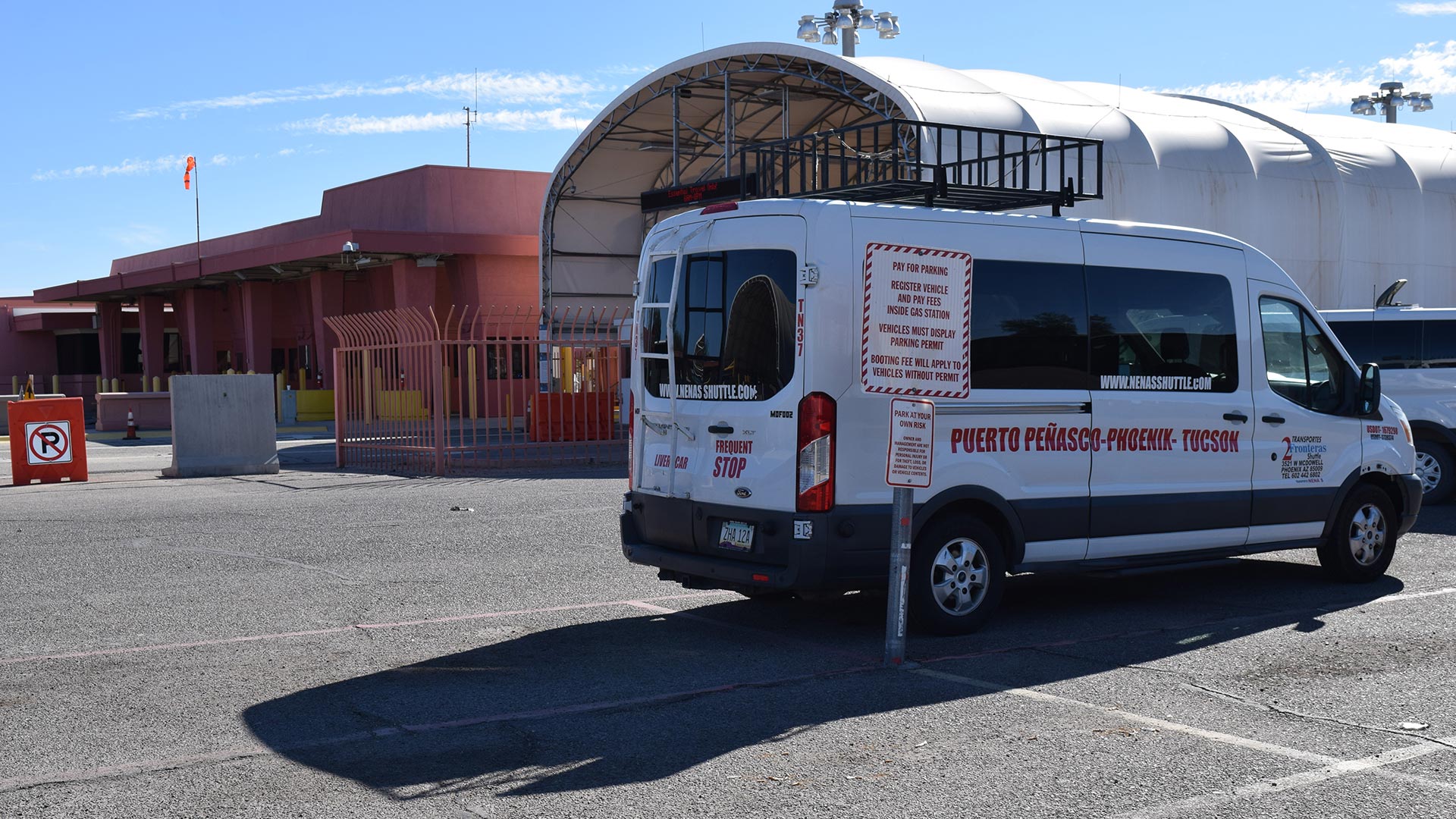 VIEW LARGER The Lukeville port of entry lay empty on Dec. 5, 2023, a day after the federal government closed the direct route to Rocky Point in order to move personnel to help with a surge of migrants.
VIEW LARGER The Lukeville port of entry lay empty on Dec. 5, 2023, a day after the federal government closed the direct route to Rocky Point in order to move personnel to help with a surge of migrants. The Lukeville port is a direct route from Arizona to popular beaches at Rocky Point, and a vital connection between the small cross-border communities of Ajo, Arizona, and Sonoyta, in Sonora.
Sergio Hernandez owns Tacos El Tarasco Restaurant in Ajo. He says he lost nearly half his revenue during the month-long closure.
And another complication — all his employees live on the Mexico side of the border. So what was a 40-minute commute became closer to six hours.
“If it happens again, I don’t know what we’re going to do,” Hernandez said. “Maybe downsize or move my business somewhere else.”
More than a million cars pass through the town of about 3200 people every year, says Bo Johnson, with the Ajo Chamber of Commerce. And the closure happened during what is usually the busiest time, when businesses make critical revenue to make it through the slow summer months.
“We’re glad to see this only lasted a month, but one month is pretty devastating as far as revenue for our businesses, for visitation and tourists in our town,” Johnson said.
Arizona has become the epicenter of migrant crossings in recent months, with Border Patrol apprehending upwards of 70,000 people in December. After the border closure, Democratic Gov. Katie Hobbs called out the national guard to assist local law enforcement with border security measures.
Toward the end of December the numbers of migrants slowed, which allowed the Department of Homeland Security to reopen the ports of entry, says DHS’s Blas Nuñez-Nieto.
“That reduction may be a result of seasonal trends,” he said. “We usually do see a decline in encounters this time of year. And it could also be the result of some coordinated enforcement actions that we are taking with the government of Mexico over the last couple of weeks.”
Nuñez-Nieto says future closures are a possibility if migrant numbers increase again.

By submitting your comments, you hereby give AZPM the right to post your comments and potentially use them in any other form of media operated by this institution.